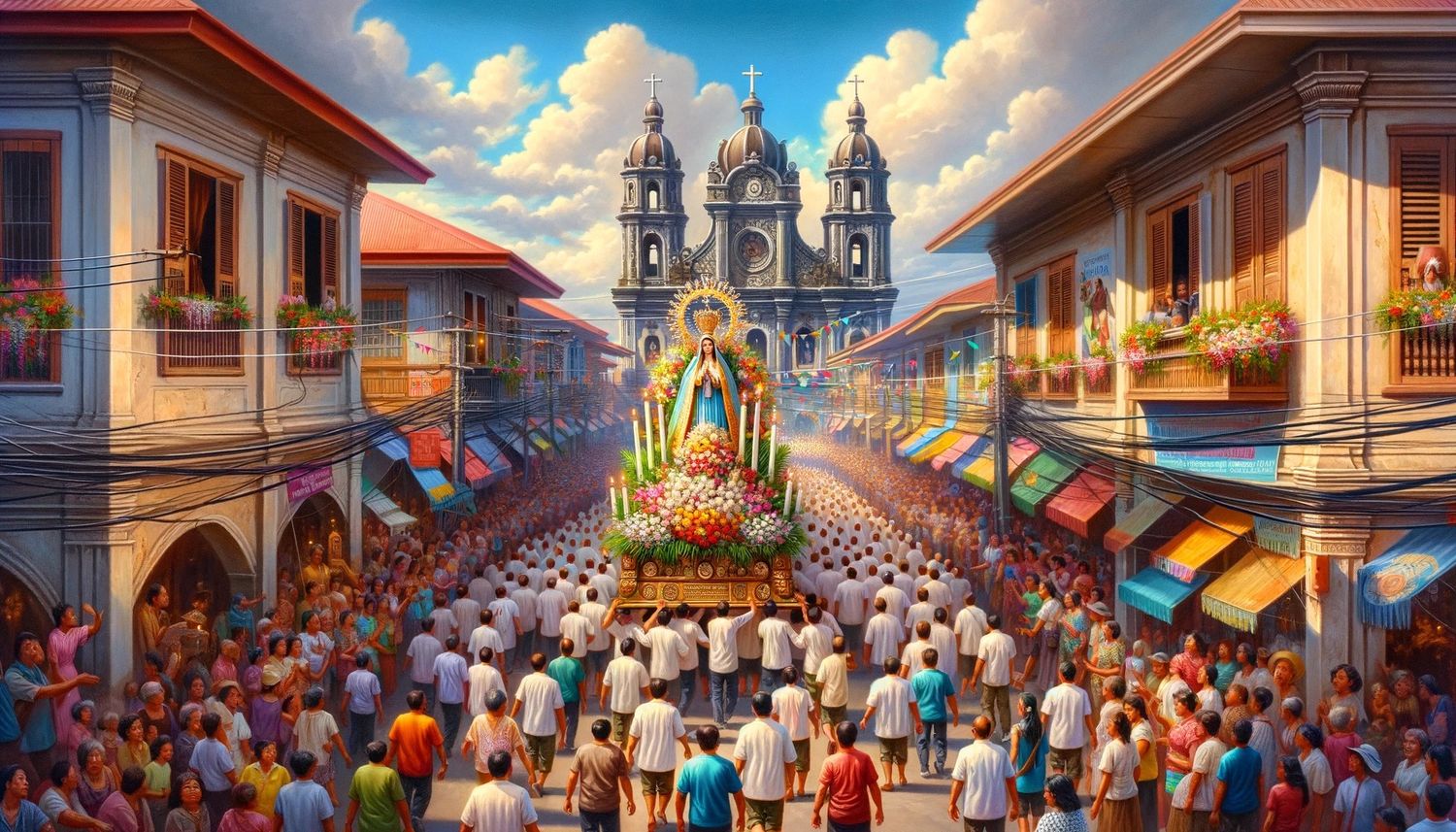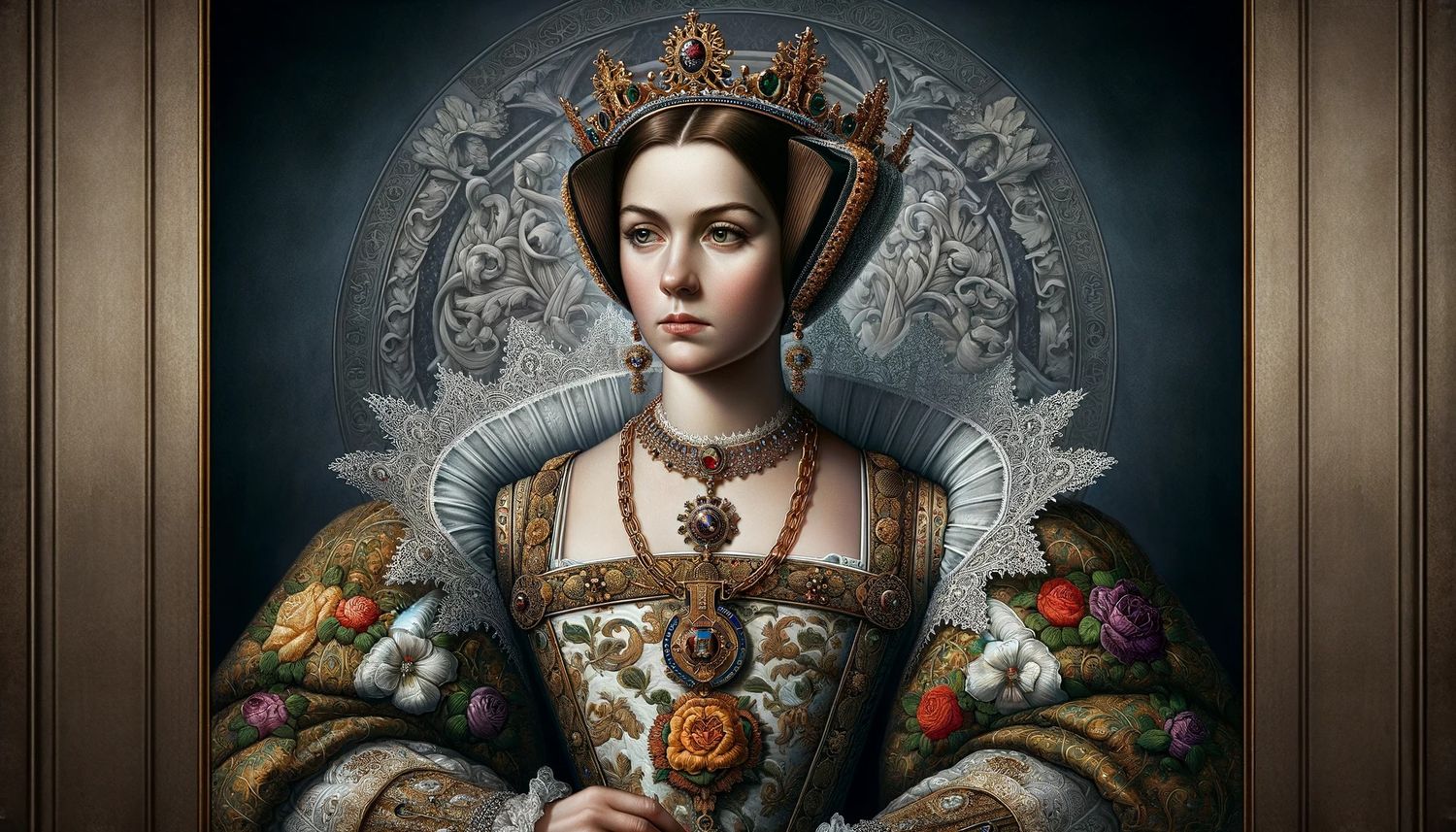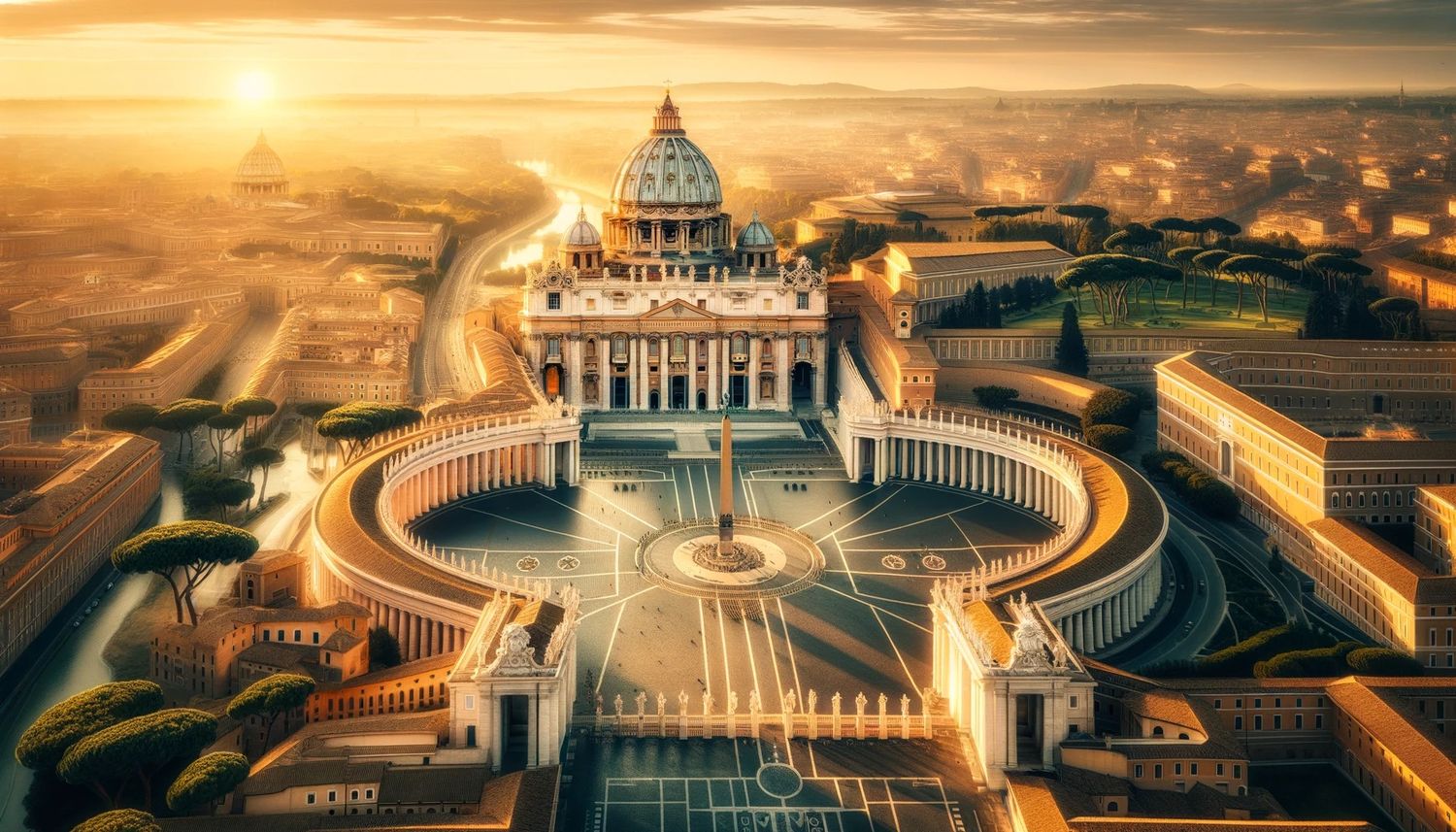Home>Theology and Spirituality>Why Is Roman Catholicism The Dominant Religion In The Philippines?


Theology and Spirituality
Why Is Roman Catholicism The Dominant Religion In The Philippines?
Published: February 18, 2024
Jason DeRose, Managing Editor at Christian.net, uses his expertise in religion and journalism to deepen understanding of faith's societal impacts. His editorial leadership, coupled with a strong academic background, enriches the platform’s diverse content, earning him recognition in both journalism and religious circles.
Discover the reasons behind the dominance of Roman Catholicism in the Philippines and its impact on theology and spirituality. Explore the historical, cultural, and social factors that have shaped the country's religious landscape.
(Many of the links in this article redirect to a specific reviewed product. Your purchase of these products through affiliate links helps to generate commission for Christian.net, at no extra cost. Learn more)
Table of Contents
- Introduction
- Historical Background of Roman Catholicism in the Philippines
- Spanish Colonization and the Spread of Catholicism
- Influence of Catholicism on Filipino Culture and Society
- Role of the Church in Philippine Politics and Governance
- Challenges and Controversies Surrounding Roman Catholicism in the Philippines
- Conclusion
Introduction
The dominance of Roman Catholicism in the Philippines is a phenomenon deeply rooted in the country's history, culture, and society. As the only predominantly Christian nation in Asia, the Philippines stands out for its strong adherence to the Catholic faith, shaping the lives of millions of Filipinos for over four centuries. The influence of Catholicism permeates various aspects of Filipino life, from religious practices and traditions to social norms and political dynamics.
The historical trajectory of Roman Catholicism in the Philippines is intertwined with the complex narrative of colonialism, evangelization, and cultural assimilation. Understanding the origins and evolution of Catholicism in the archipelago provides valuable insights into the enduring impact it has had on the Filipino people. Moreover, exploring the role of the Catholic Church in shaping the country's identity and societal structures sheds light on the intricate relationship between religion and national development.
In this article, we will delve into the historical background of Roman Catholicism in the Philippines, examining the pivotal role of Spanish colonization in the spread of the faith and its subsequent integration into the fabric of Filipino culture. Furthermore, we will explore the profound influence of Catholicism on various aspects of Filipino society, including its impact on politics, governance, and social norms. Additionally, we will address the challenges and controversies surrounding Roman Catholicism in the Philippines, offering a comprehensive overview of the complexities inherent in the country's religious landscape.
By delving into these multifaceted dimensions, we aim to unravel the intricate tapestry of Roman Catholicism in the Philippines, providing a nuanced understanding of its significance and the challenges it faces in a rapidly evolving society. Through this exploration, we can gain valuable insights into the enduring legacy of Catholicism in the Philippines and its ongoing relevance in the contemporary era.
Historical Background of Roman Catholicism in the Philippines
The historical roots of Roman Catholicism in the Philippines can be traced back to the early 16th century when the Spanish colonial expedition, led by Ferdinand Magellan, arrived in the archipelago in 1521. It was during this period that the seeds of Catholicism were first sown in the Philippine soil, marking the beginning of a profound religious and cultural transformation.
The Spanish conquest and subsequent colonization of the Philippines facilitated the spread of Catholicism as a central component of the colonial project. Spanish missionaries, notably the Augustinians, Franciscans, and Jesuits, played a pivotal role in evangelizing the indigenous population, employing a combination of religious zeal and political authority to propagate the Christian faith. The establishment of missions, churches, and religious orders across the islands became instrumental in consolidating the influence of Catholicism and integrating it into the fabric of Filipino society.
One of the enduring legacies of Spanish colonial rule was the imposition of Catholicism as the official religion, leading to the conversion of a significant portion of the native population. The syncretic nature of Filipino spirituality, characterized by the fusion of indigenous beliefs with Catholic rituals and traditions, reflects the complex process of religious acculturation that unfolded during the colonial era. This syncretism gave rise to unique religious practices and devotions, such as the veneration of Catholic saints alongside indigenous deities, exemplifying the dynamic interplay between Catholicism and local cultural expressions.
The Spanish colonial period also witnessed the construction of iconic churches and religious structures, many of which still stand as enduring symbols of the country's rich religious heritage. The fusion of Spanish architectural influences with indigenous craftsmanship resulted in the creation of awe-inspiring edifices that continue to evoke a sense of spiritual grandeur and historical significance.
The enduring imprint of Spanish Catholicism on the Philippines is evident in the religious fervor and devotion that permeate Filipino society. The annual observance of Holy Week, marked by solemn processions and reenactments of the Passion of Christ, stands as a testament to the deeply ingrained religious traditions inherited from the colonial past. Furthermore, the widespread celebration of fiestas in honor of patron saints underscores the enduring legacy of Catholicism as a vibrant and integral aspect of Filipino culture.
In essence, the historical background of Roman Catholicism in the Philippines is a narrative of enduring influence, cultural synthesis, and religious resilience. The convergence of Spanish colonialism and Catholic evangelization has left an indelible mark on the Filipino religious landscape, shaping the collective identity and spiritual ethos of the nation for centuries to come.
Spanish Colonization and the Spread of Catholicism
The arrival of Spanish explorers in the Philippines in the early 16th century marked the beginning of a transformative period in the country's history. Led by Ferdinand Magellan, the Spanish expedition not only sought territorial expansion but also aimed to propagate the Catholic faith in the newly discovered lands. The intertwining of colonial ambitions with religious evangelization laid the foundation for the enduring influence of Roman Catholicism in the archipelago.
Spanish missionaries, representing religious orders such as the Augustinians, Franciscans, and Jesuits, played a pivotal role in the evangelization efforts, venturing into the diverse regions of the Philippines to spread the Christian message. Their endeavors were characterized by a zealous commitment to conversion, often accompanied by the establishment of missions and the construction of churches to serve as centers of religious activity. This concerted effort to disseminate Catholicism among the indigenous population contributed to the gradual expansion of the faith across the islands.
The Spanish colonial administration, recognizing the strategic importance of religion in consolidating their authority, institutionalized Catholicism as the official religion of the Philippines. This official endorsement of the faith facilitated the widespread conversion of the native inhabitants, as well as the integration of Catholic rituals and practices into the fabric of Filipino society. The syncretic nature of Filipino spirituality, shaped by the fusion of indigenous beliefs with Catholic traditions, exemplified the dynamic process of religious acculturation that unfolded during the colonial era.
The enduring legacy of Spanish Catholicism is evident in the architectural marvels that dot the Philippine landscape. Magnificent churches, adorned with intricate designs and ornate decorations, stand as enduring testaments to the enduring imprint of Spanish colonial influence. These architectural masterpieces not only served as places of worship but also became symbols of religious authority and cultural dominance.
The spread of Catholicism during the Spanish colonial period was not merely a religious endeavor; it was a multifaceted process that intertwined faith with power, culture, and identity. The enduring impact of this historical convergence continues to shape the religious landscape of the Philippines, underscoring the profound and enduring influence of Roman Catholicism in the country.
Influence of Catholicism on Filipino Culture and Society
The influence of Catholicism on Filipino culture and society is profound and multifaceted, permeating various aspects of daily life and shaping the collective identity of the Filipino people. From religious practices and traditions to social norms and familial dynamics, the impact of Catholicism is deeply ingrained in the fabric of Filipino society.
One of the most visible manifestations of Catholic influence is the pervasiveness of religious rituals and traditions in Filipino life. The observance of Catholic feasts and holy days holds significant cultural importance, with devout Filipinos actively participating in religious processions, novenas, and other forms of devotional practices. The annual observance of Holy Week, culminating in the reenactment of the Passion of Christ, stands as a poignant expression of faith and communal solidarity. Similarly, the celebration of patron saint fiestas, marked by vibrant festivities and religious pageantry, underscores the fusion of Catholicism with local customs and traditions.
Moreover, the moral and ethical framework espoused by Catholic teachings has profoundly influenced Filipino societal values. Concepts such as compassion, forgiveness, and social justice, deeply rooted in Catholic doctrine, have shaped the collective conscience of the Filipino people. The emphasis on family, community, and solidarity, inherent in Catholic social teachings, resonates deeply within Filipino culture, fostering a strong sense of interconnectedness and mutual support among individuals and communities.
The role of the Catholic Church as a social and educational institution has also left an indelible mark on Filipino society. Throughout history, the Church has been at the forefront of providing social services, education, and healthcare, particularly in underserved communities. The establishment of schools, hospitals, and charitable organizations by religious orders and dioceses has contributed significantly to the welfare and development of Filipino communities, reflecting the enduring commitment of the Church to social upliftment and empowerment.
Furthermore, the influence of Catholicism extends to the realm of arts, literature, and music, with religious themes and motifs permeating various forms of cultural expression. Iconic works of art, religious processional images, and traditional hymns and chants bear testament to the fusion of faith and artistic creativity, serving as enduring symbols of spiritual inspiration and cultural heritage.
In essence, the influence of Catholicism on Filipino culture and society transcends mere religious adherence; it encompasses a rich tapestry of traditions, values, and expressions that have become integral to the Filipino way of life. The enduring legacy of Catholicism continues to shape the collective consciousness and cultural identity of the Filipino people, reflecting the profound and enduring impact of the faith on the nation's social fabric.
Role of the Church in Philippine Politics and Governance
The Catholic Church has historically played a significant role in shaping the political and governance landscape of the Philippines. As a deeply entrenched institution with a wide-reaching influence, the Church has been a prominent voice in matters of social justice, human rights, and public policy, exerting its moral authority to advocate for the welfare of the Filipino people.
One of the most notable ways in which the Church has impacted Philippine politics is through its involvement in social and political issues. Throughout history, the Church has been a vocal advocate for the protection of human rights, the promotion of social justice, and the alleviation of poverty. By speaking out on issues such as government corruption, extrajudicial killings, and social inequality, the Church has served as a moral compass, challenging the status quo and calling for ethical governance and accountability.
Furthermore, the Church has played a pivotal role in mediating conflicts and fostering peace within the Philippine society. During times of political unrest and social upheaval, the Church has often served as a neutral arbiter, facilitating dialogue and reconciliation among conflicting parties. Its efforts in promoting peace and reconciliation have been instrumental in mitigating tensions and fostering a sense of unity within the country.
In addition to its advocacy and mediation roles, the Church has also been actively engaged in providing social services and community development initiatives. Through its extensive network of parishes, schools, and charitable organizations, the Church has been at the forefront of addressing social issues such as poverty, education, and healthcare. Its commitment to social welfare and community empowerment has filled critical gaps in public services, particularly in underserved and marginalized areas.
Moreover, the Church's influence extends to the realm of electoral politics, where it has sought to guide the moral discernment of the electorate. By issuing pastoral letters and statements that address pertinent social and political issues, the Church has sought to inform and educate voters on matters of ethical governance and social responsibility. Its advocacy for conscientious and informed voting reflects its commitment to promoting the common good and upholding moral integrity in the political sphere.
Overall, the role of the Church in Philippine politics and governance is characterized by its steadfast commitment to social justice, human rights, and ethical leadership. Its advocacy, mediation, and social service initiatives have contributed to the advancement of a more just and equitable society, reflecting the enduring influence of Catholicism on the political and social fabric of the Philippines.
Challenges and Controversies Surrounding Roman Catholicism in the Philippines
The dominance of Roman Catholicism in the Philippines has not been without its share of challenges and controversies. In recent decades, the Catholic Church in the Philippines has grappled with various issues that have tested its institutional integrity and moral authority. One of the most pressing challenges has been the issue of clergy abuse and misconduct. Instances of sexual abuse and exploitation involving members of the clergy have surfaced, leading to widespread public outrage and calls for accountability within the Church. These revelations have not only shaken the trust of the faithful but have also raised profound questions about the Church's handling of such cases and its commitment to safeguarding the vulnerable.
Moreover, the Church has faced criticism and scrutiny regarding its stance on certain social and ethical issues. Debates surrounding reproductive health, contraception, and LGBTQ+ rights have sparked tensions between the Church and proponents of progressive social policies. The Church's unwavering position on these matters has been a point of contention, particularly in a rapidly evolving society where diverse perspectives on these issues abound.
Furthermore, the perceived entanglement of the Church in political affairs has drawn criticism from various sectors. While the Church's advocacy for social justice and ethical governance is widely acknowledged, there have been concerns about the extent of its influence on political decision-making and electoral processes. Questions regarding the separation of church and state, as well as the potential impact of religious endorsements on political dynamics, have fueled debates about the proper role of the Church in the public sphere.
Additionally, internal challenges related to the declining number of clergy and religious vocations have posed significant hurdles for the Church in fulfilling its pastoral duties. The diminishing pool of priests and religious workers has strained the capacity of the Church to effectively serve its growing congregation, leading to concerns about the sustainability of its ministries and outreach efforts.
Amid these challenges, the Catholic Church in the Philippines continues to navigate a complex landscape, seeking to address internal reforms, engage with contemporary social issues, and uphold its moral authority in a rapidly changing society. The resilience and adaptability of the Church in confronting these challenges will undoubtedly shape its trajectory and influence in the years to come.
Conclusion
The dominance of Roman Catholicism in the Philippines is a testament to the enduring legacy of Spanish colonialism and the profound impact of Catholic evangelization on the archipelago. From the early days of Spanish exploration to the present era, the Catholic faith has become deeply intertwined with the cultural, social, and political fabric of Filipino society. The historical trajectory of Catholicism in the Philippines reflects a complex narrative of religious assimilation, cultural synthesis, and enduring resilience.
The historical background of Roman Catholicism in the Philippines is marked by the convergence of Spanish colonial ambitions with fervent religious evangelization. The spread of Catholicism during the colonial period laid the foundation for the enduring influence of the faith, shaping the spiritual ethos and collective identity of the Filipino people. The syncretic nature of Filipino spirituality, characterized by the fusion of indigenous beliefs with Catholic traditions, exemplifies the dynamic interplay between faith and cultural expression.
The influence of Catholicism on Filipino culture and society is profound and multifaceted, permeating various aspects of daily life and shaping societal values and traditions. From religious observances and traditions to moral and ethical frameworks, the impact of Catholicism is deeply ingrained in the Filipino way of life. Moreover, the role of the Catholic Church as a social and educational institution has left an indelible mark on Filipino society, contributing to community development and social welfare.
In the realm of politics and governance, the Catholic Church has been a prominent voice for social justice, human rights, and ethical leadership. Its advocacy, mediation, and social service initiatives have contributed to the advancement of a more just and equitable society, reflecting the enduring influence of Catholicism on the political and social fabric of the Philippines.
However, the Church has also faced challenges and controversies, including issues of clergy abuse, ethical stances on social issues, and concerns about its involvement in political affairs. These challenges have tested the institutional integrity and moral authority of the Church, prompting calls for internal reforms and greater accountability.
In conclusion, the dominance of Roman Catholicism in the Philippines is a complex tapestry of historical legacies, cultural influences, and contemporary challenges. The enduring influence of Catholicism on the Filipino way of life underscores its significance as a defining aspect of the nation's identity. As the Philippines continues to evolve in the modern era, the Catholic Church faces the imperative of addressing these challenges while upholding its mission of spiritual guidance, social advocacy, and community service. The resilience and adaptability of the Church in confronting these complexities will undoubtedly shape its trajectory and influence in the years to come.














